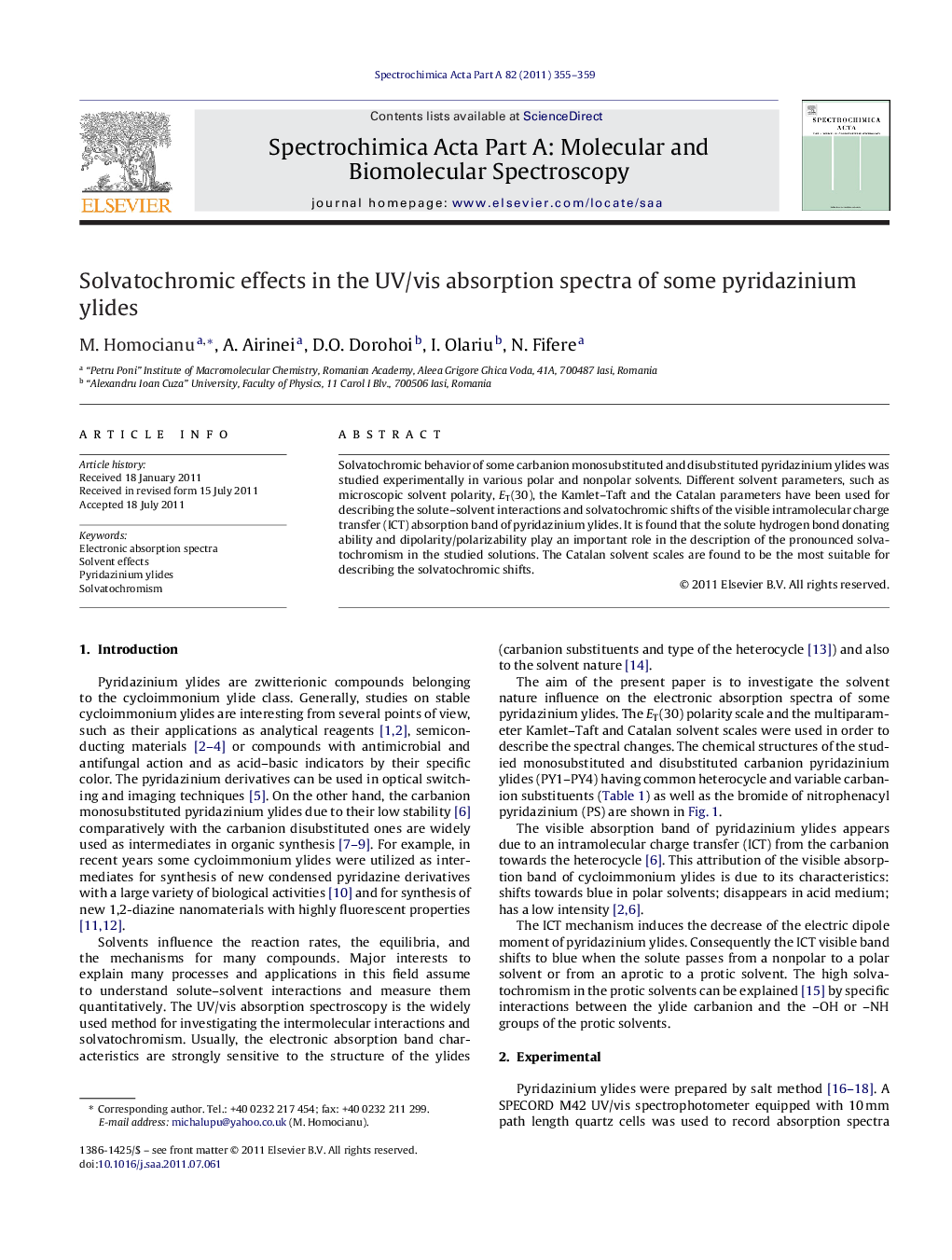| Article ID | Journal | Published Year | Pages | File Type |
|---|---|---|---|---|
| 1233313 | Spectrochimica Acta Part A: Molecular and Biomolecular Spectroscopy | 2011 | 5 Pages |
Solvatochromic behavior of some carbanion monosubstituted and disubstituted pyridazinium ylides was studied experimentally in various polar and nonpolar solvents. Different solvent parameters, such as microscopic solvent polarity, ET(30), the Kamlet–Taft and the Catalan parameters have been used for describing the solute–solvent interactions and solvatochromic shifts of the visible intramolecular charge transfer (ICT) absorption band of pyridazinium ylides. It is found that the solute hydrogen bond donating ability and dipolarity/polarizability play an important role in the description of the pronounced solvatochromism in the studied solutions. The Catalan solvent scales are found to be the most suitable for describing the solvatochromic shifts.
Graphical abstractLinear relationship (R2 = 0.975) between the experimental and calculated absorption maxima ν˜max of PY3 obtained by a multiple linear regression analysis according to new Catalan equation.Figure optionsDownload full-size imageDownload as PowerPoint slideHighlights► Solvatochromic behavior of some monosubstituted and disubstituted carbanion pyridazinium ylides in different polar and nonpolar solvents was analyzed. ► Catalan solvent scales are more appropriate than the Kamlet–Taft scales for describing the solvatochromism of the studied compounds. ► Solvent effect shift of the visible ICT absorption band strongly depends on the ylide structure and solvent nature. ► Solute hydrogen bond donating ability and dipolarity/polarizability play an important role in the description of the pronounced solvatochromism of pyridazinium ylides.
